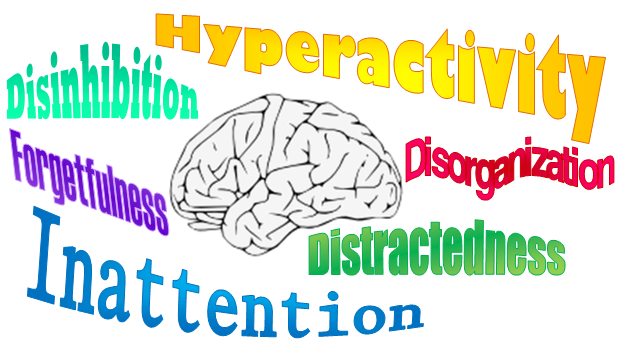
Easily Distracted? This Could Be Why.
This article contains fascinating insight on how our brains work that was just published this past week. Exciting stuff in my opinion (although I am biased)! But even though it’s so awesome, I’d be willing to bet that you can’t read the entire post without getting distracted. Why? Read on.
With Our Team!
The Problem
Distractions are everywhere. It might be a conversation happening in the background, your phone vibrating with your 20th email of the day, the tag on the back of your shirt, or simply a thought that pops into your head. It can happen at any time and there is seemingly little you can do about it.
No matter the source of the distraction, the effect is the same. Your mind wanders until you eventually (hopefully) return back to the task at hand a little frustrated with yourself. And then the cycle repeats. But what if you could break the cycle? What if you knew what was happening in your brain and you could do something to stop it?
The Study
A new study published in the prestigious Journal of Neuroscience this past week sheds some light on the issue. Participants were hooked up to devices which measured their brain wave patterns while either their hand or foot were touched. When the subjects were told to ignore the touches, the scientists saw increased communication between two key areas in the brain:
- The Somatosensory Cortex
- The Right Inferior Frontal Cortex (rIFC)
The somatosensory cortex is simply the area in your brain responsible for processing sensory stimulation (in this case, touch on the hand or foot). The rIFC (right inferior frontal cortex), however, is not directly involved in sensing touch. It is responsible for inhibiting function in other areas of the brain.
The Explanation
When the study participants decided to consciously ignore a distraction (a touch on the hand or foot), they fired up their rIFC to inhibit the area of the brain responsible for processing the sensation of the touch. This means that they not only chose to ignore to the touch, but they were actually able to “feel” the touch less.
The ability to turn off different sensations is key to a properly functioning brain. You might notice the feeling of your shirt on your skin when you first put it on in the morning, but you probably don’t feel much after a minute or two. Your brain automatically inhibits sensory input that it determines is unimportant. If it didn’t, your brain would be so overloaded trying to process the massive amount of information that it would shut down. The rIFC is the brake your brain needs to focus on what is important.
How is Your Brain’s Brake?
What this study showed is that you can actually choose to turn on your rIFC. That’s great, but what if your rIFC isn’t working too well? Many neurodevelopmental conditions such as autism spectrum disorder, sensory processing disorder, and ADHD involve decreased function of the right side of the brain (including the rIFC). Not surprisingly, they are often hypersensitive to sound, light, and/or touch and also tend to have difficulty filtering out distractions
You may or may not have one of the medical conditions listed above, but if you get distracted easily there’s a good chance that your rIFC isn’t working as well as it could. The truth is that only severe imbalances in brain function get a label of a medical diagnosis. But many of us are walking around living less than optimal lives because one or more areas of our brains aren’t up to par.
What Your Brain Needs
Your rIFC, like all other areas of your brain, needs 3 things in order to function at 100%.
- Oxygen (blood flow)
- Nutrition
- Stimulation
The first two are pretty straightforward and can usually be handled through diet and exercise. Ever try to focus when you’re hungry or have a conversation with a 5 year old after he’s binged on birthday cake? The brain can’t focus if your blood sugar isn’t regulated.
The third item on the list may seem a little counterintuitive. Why do we want more stimulation if we are trying to ignore extraneous sensory input? Remember that the rIFC is your brain’s brake. So stimulation to the rIFC increases its function which in turns inhibits other areas.
How to Supercharge Your rIFC (wow, that sounds nerdy)
You’ve probably heard that the right side of your brain communications with the left side if your body. If the right side of your brain is not getting proper stimulation from the left side of your body, it won’t work right. A chiropractor trained in functional neurology can do an examination to determine if this is happening and then perform specific chiropractic adjustments to restore the proper communication.
Much of this needed stimulation comes from the spine. So if your spine that are not moving properly (called subluxations), the brain will not get proper stimulation and may become imbalanced.
This is where a chiropractor can help. Especially if that chiropractor is familiar with the principles of functional neurology.
